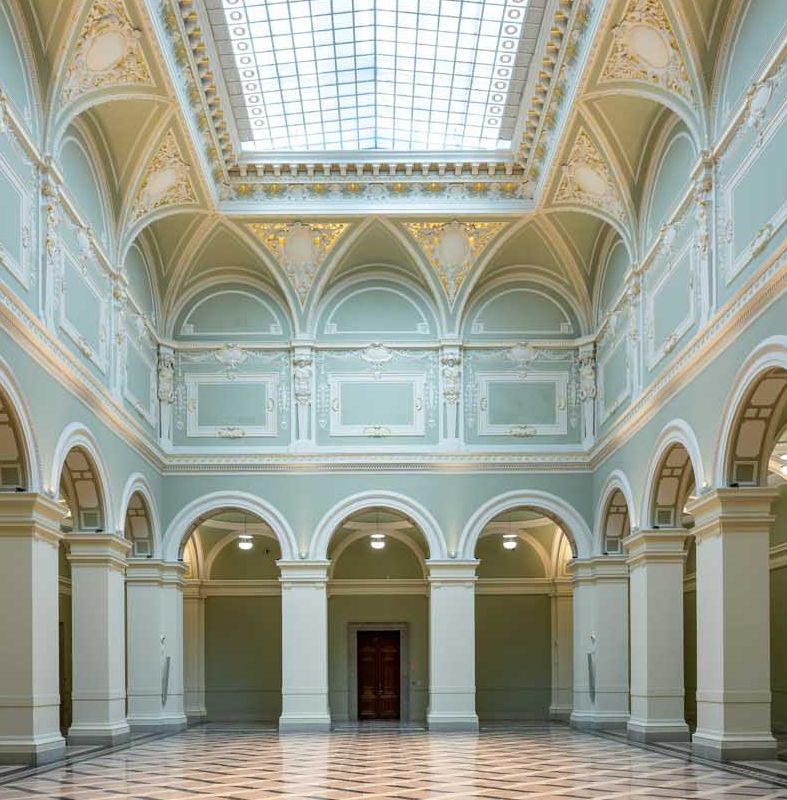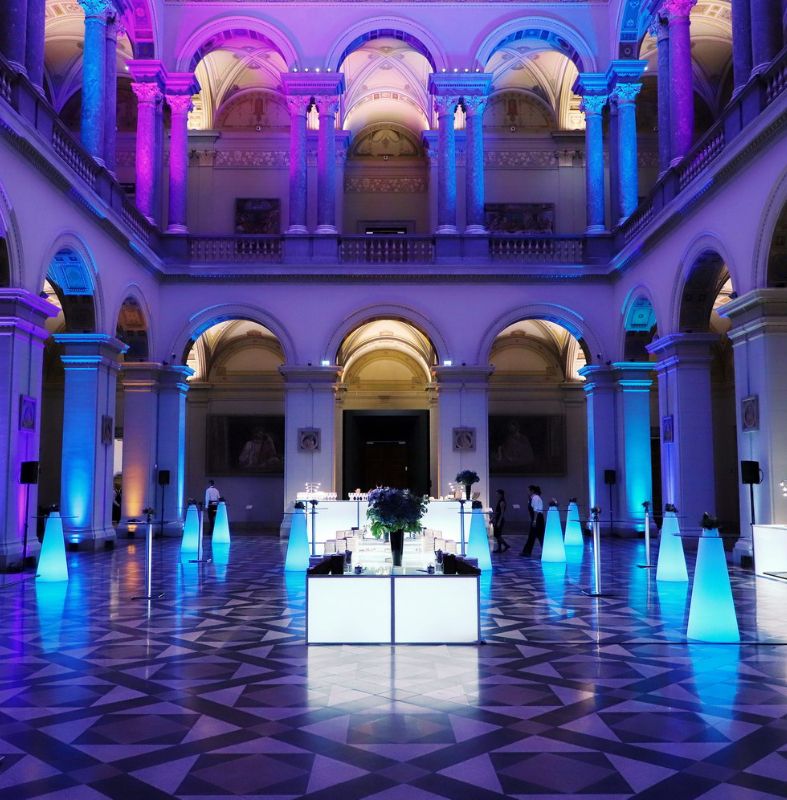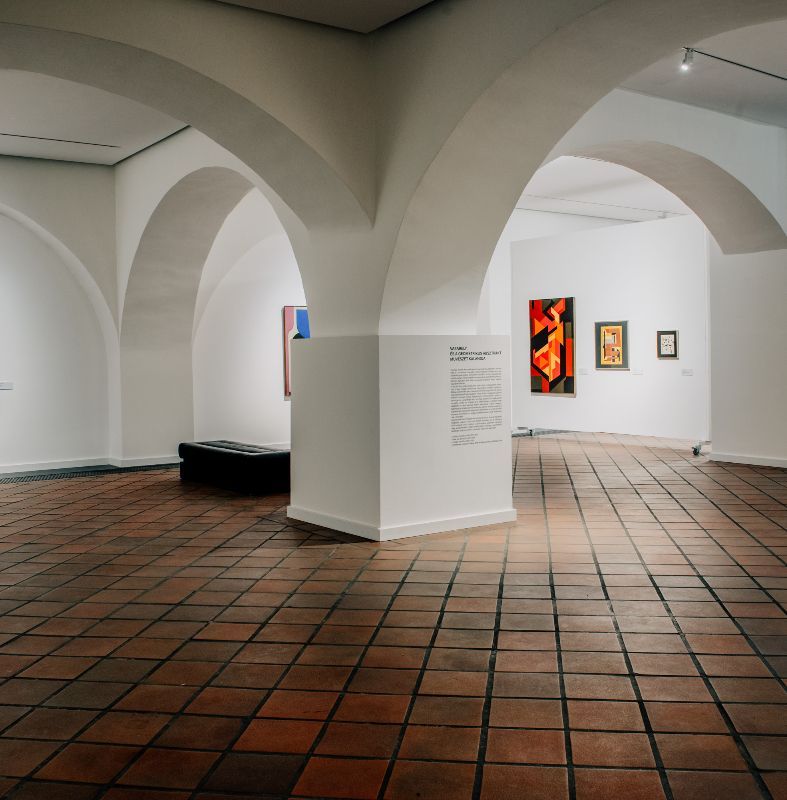Gala Dinner
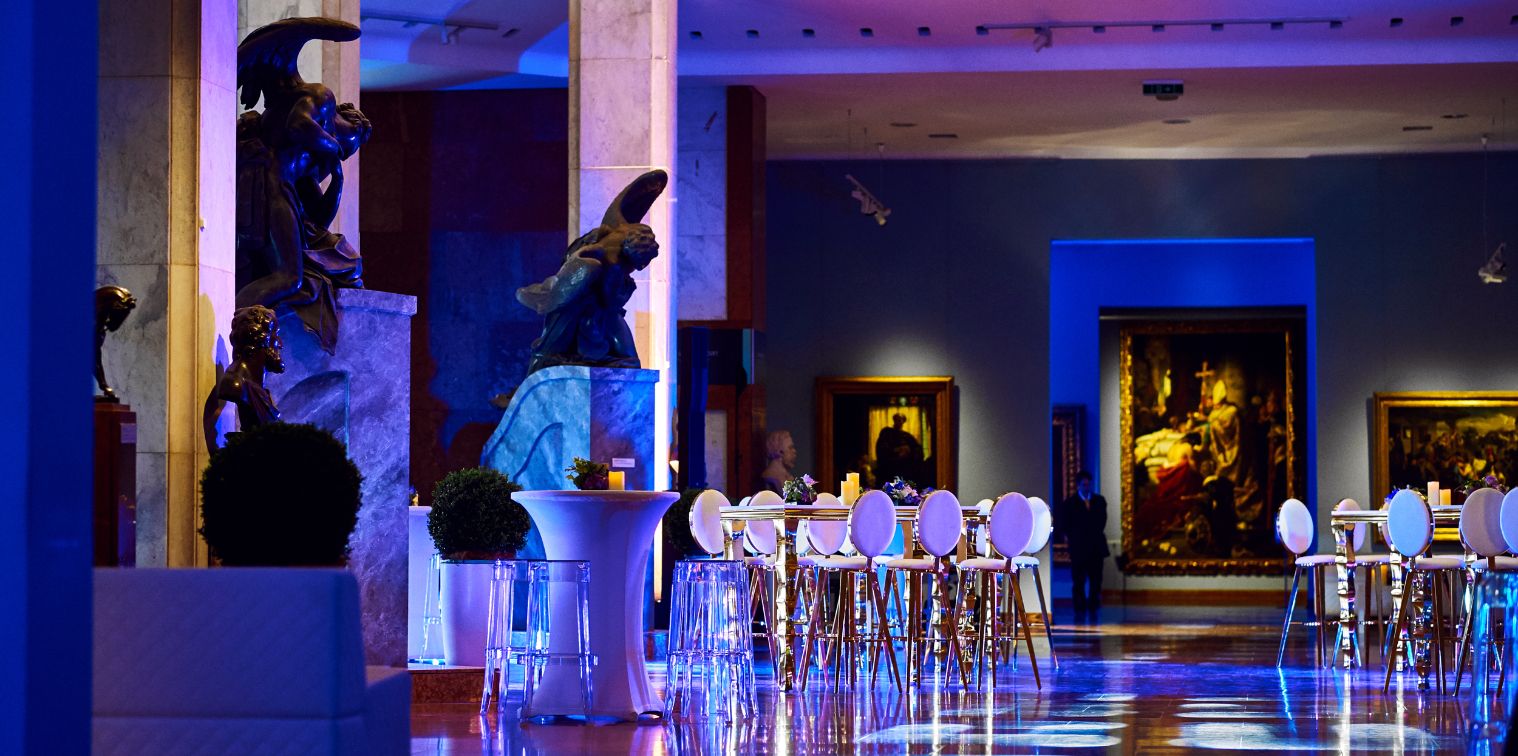
A gala dinner is the king of all meetups. It is the most elegant format for corporate or public events. With round tables and constructed stages, the large halls of the Museum offer perfect locations for dinners and award ceremonies with organised shows.
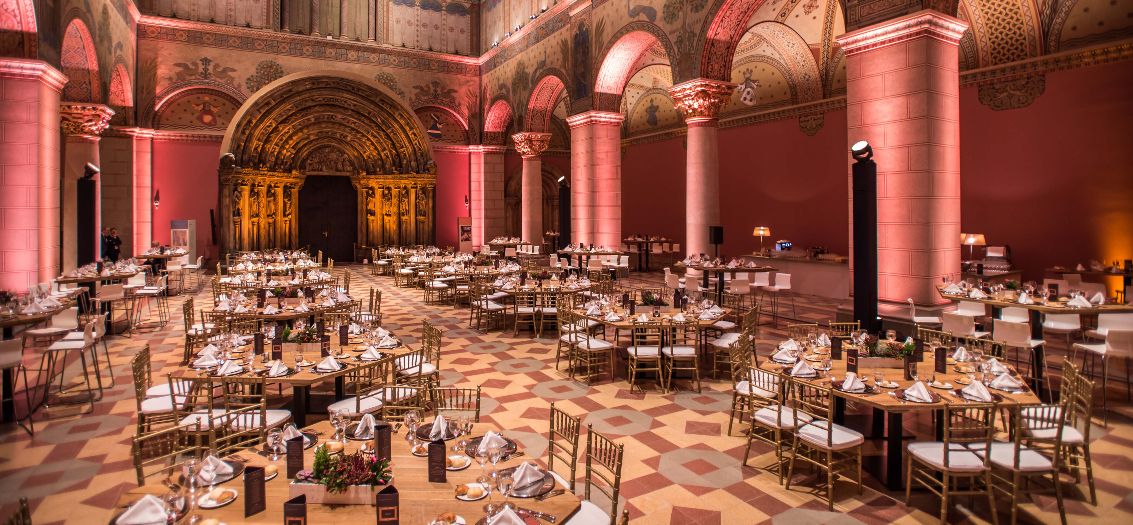
Renaissance Hall
The Renaissance Hall recalls the architectural style of 16th century Italy. Its semicircular arcades, classic columns, parapet and frescoes bring us back to a yard of a renaissance manor. There are two groups of artefacts in the hall that are of central importance for the Museum: the Italian frescoes and the Venetian brims. The fresco collection is exclusive material even by international standards. The exhibition starts on the ground floor with artworks from the late Gothic and early Renaissance periods, and ends on the cloister with late Renaissance pieces from the 16th century. The brims exhibited in the hall are the works of Venetian stonemasons – these artefacts once decorated the streets, yards and aristocratic gardens of Venice.
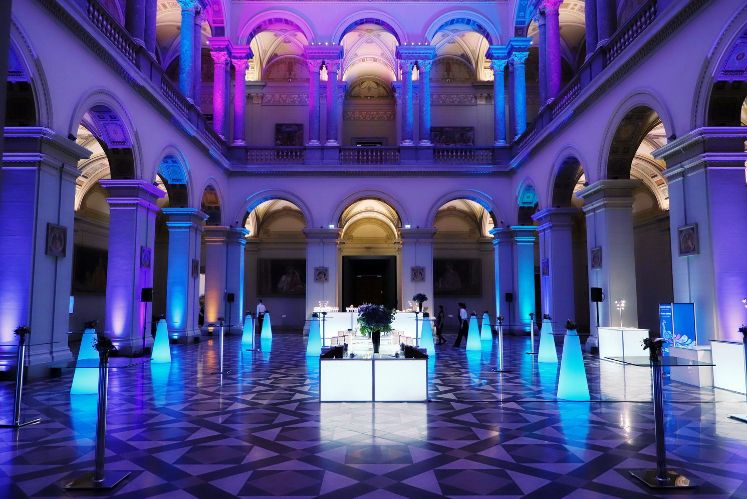
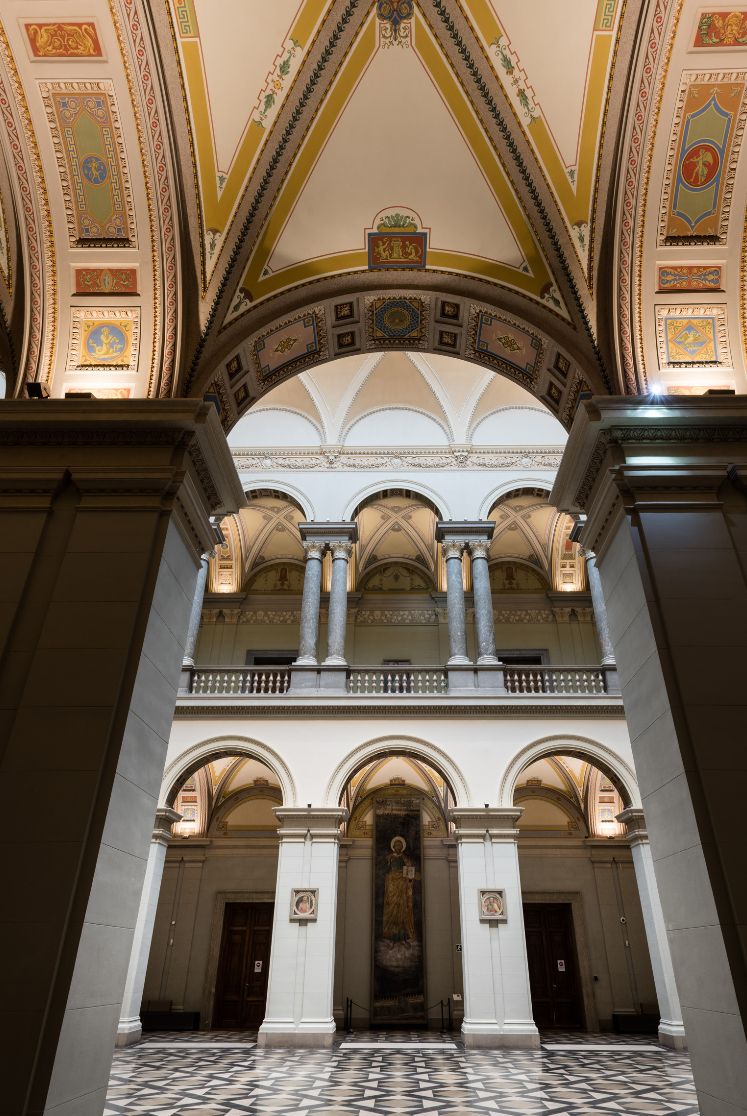

Marble Hall
The representative, neorenaissance reception hall of the museum received its name from the marble surface areas covering its walls. The two sides of the hall are bordered by the banisters of the stairways that lead to the first floor. Its landing is connected to the Marble Hall as a gallery, offering a spectacular view to the hall below.
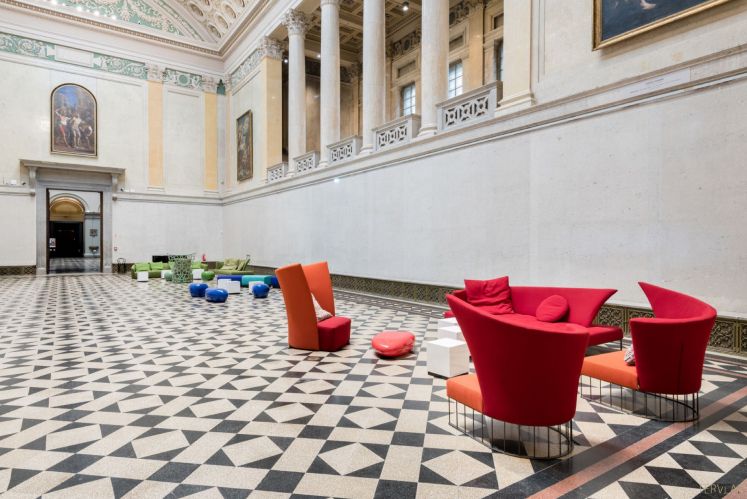
Romanesque Hall
For 70 years the Romanesque Hall served as a vast, unexploited storeroom, only to be reopened as one of the grandest and most spectacular venue of the National Museum of Fine Arts. Apart from its artistic merits, the Romanesque Hall is perfectly suited to host all types of events. Its atmosphere is enhanced by the fact that we enter into this twelfth century space through the plaster replica of the Golden Gate of the Freiberg Cathedral. The location with its massive columns and pillars emulates the interior atmosphere of a Roman era basilica. The frescoes connect to both Christian iconography and the concept of the Millenium and represent the great figures of Hungarian history. The walls are decorated with state and municipal coat of arms as well as that of allied countries. The breathtakingly rich decoration is supplemented with ornamental patterns and symbolic images, such as the tree of life and peacocks symbolizing immortality. The triumphal arches are adorned with the signs of the zodiac. The gryphon and dragon figures on the vaults of the corridor recall the frescoes and panels of medieval Germany. As a result of all these, the sacral location represents the peak of turn-of-the-century decoration. The hall was seriously damaged during the Second World War and has been hidden from the public eye for 70 years. It was reopened in 2018 and has its own gift collection.
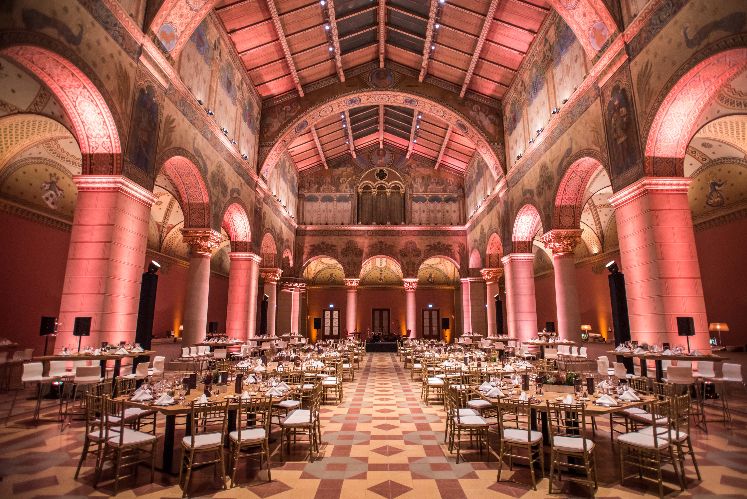
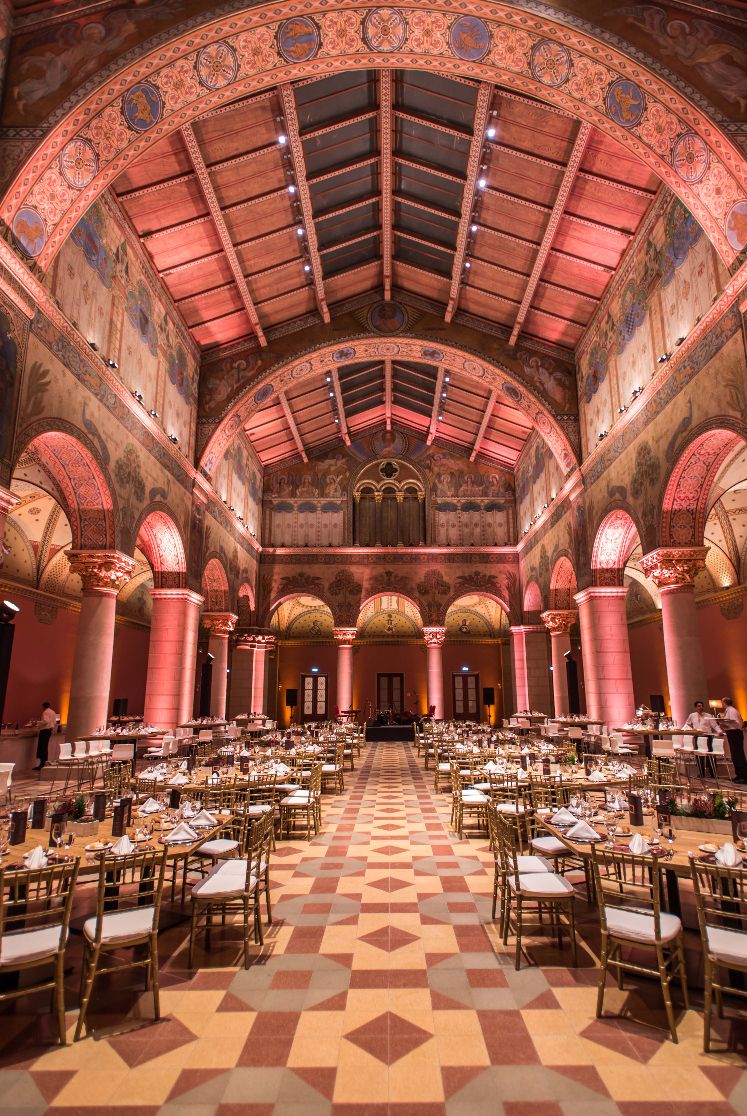
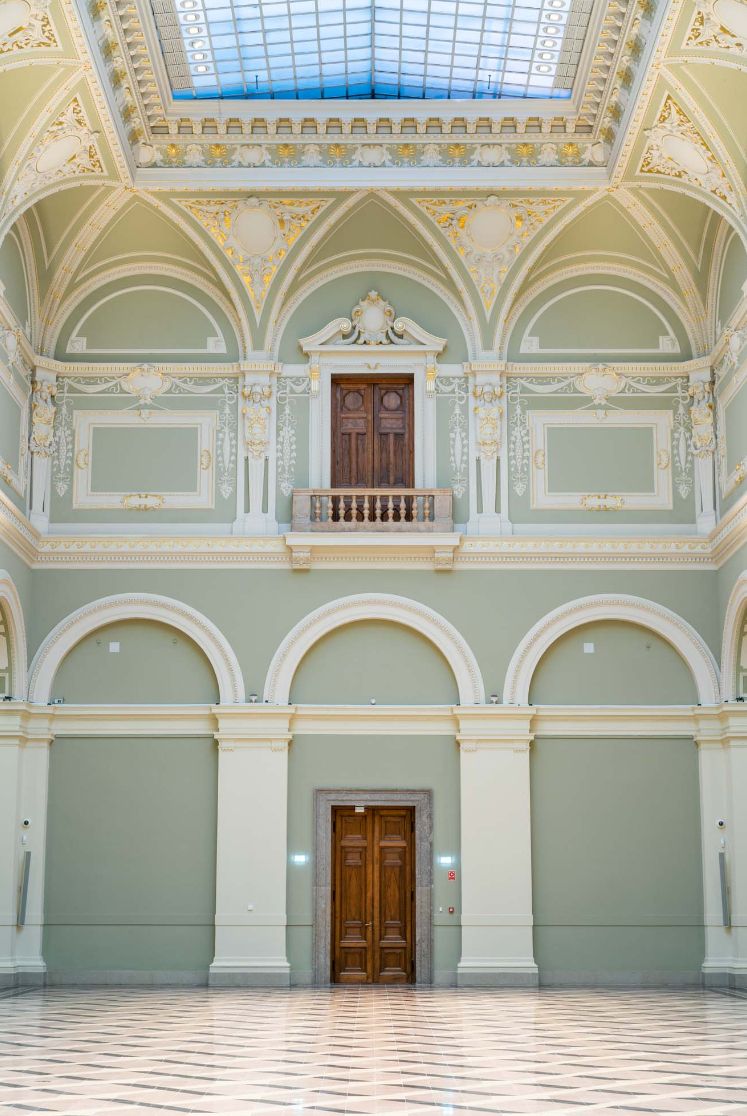
Baroque Hall
According to the original concept of its architects, this hall represents an in-door courtyard within the building with signature elements of Baroque design. The paintings exhibited here are selected from the Italian Baroque collection of our gallery. In its current state, it strives to evoke the atmosphere of a former aristocratic collection.
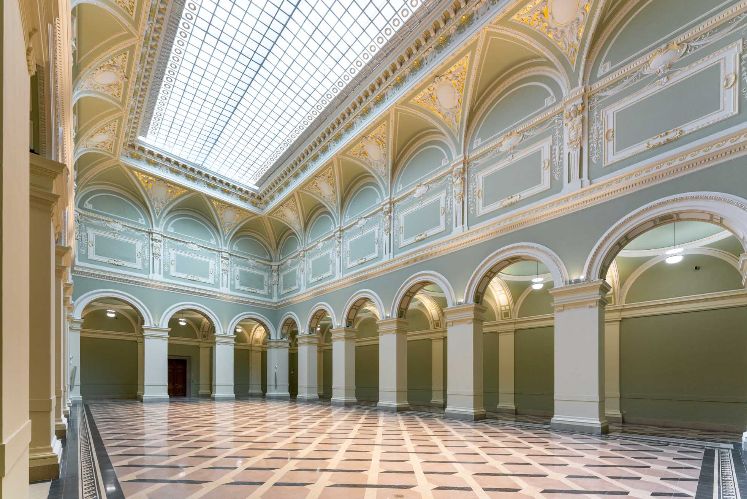



Bródy Zsigmond és Adél Rendezvénytér

